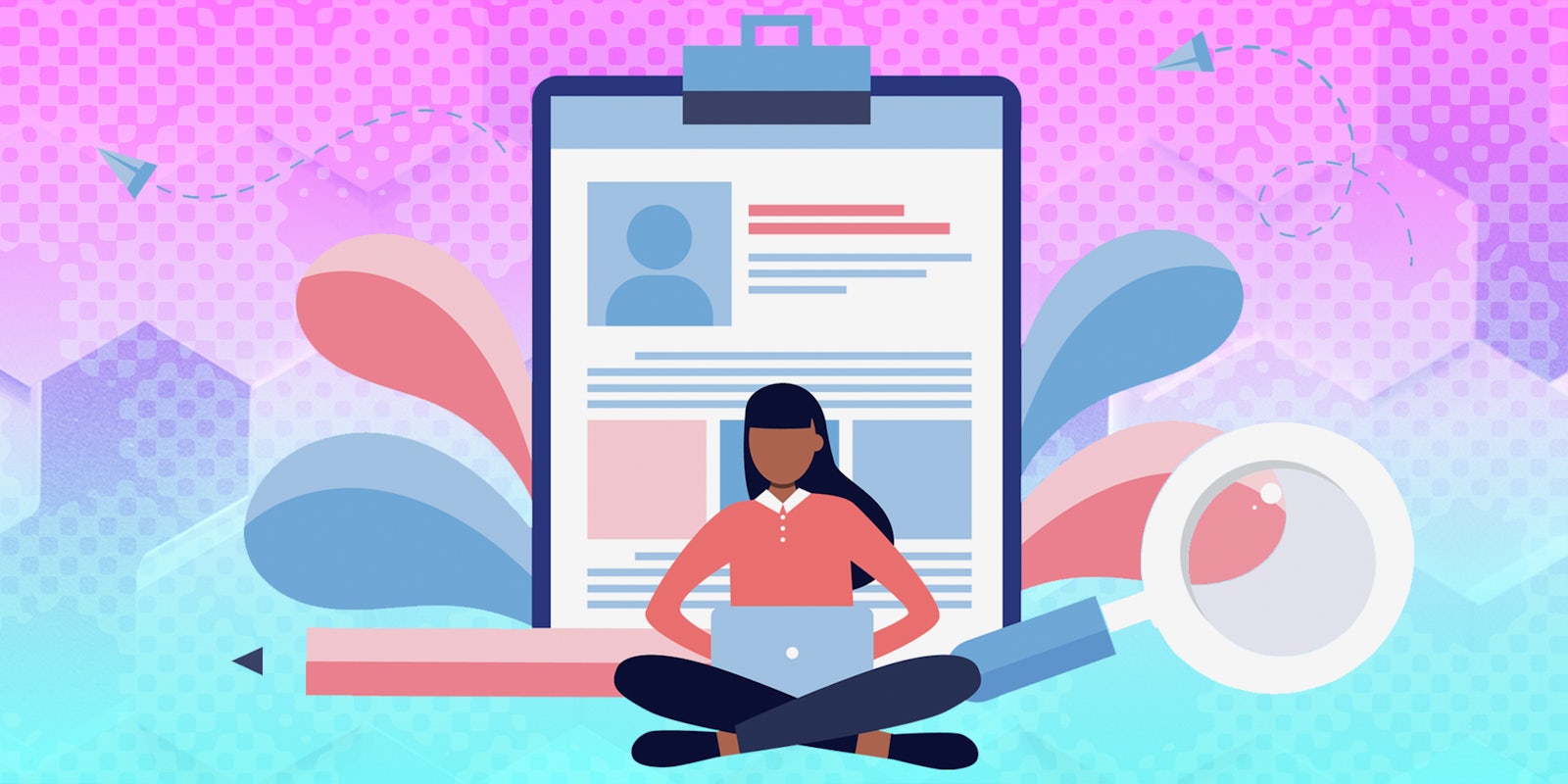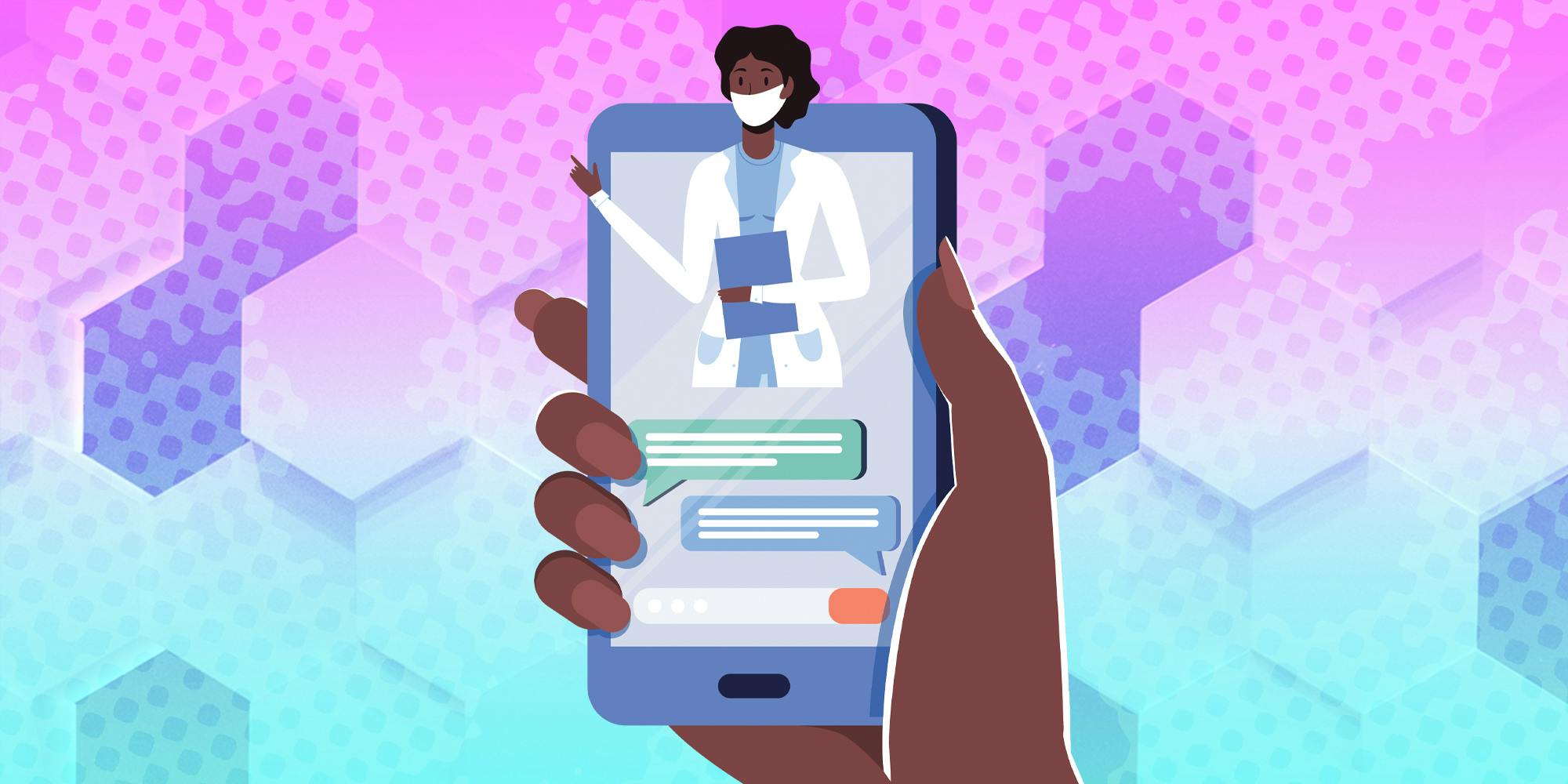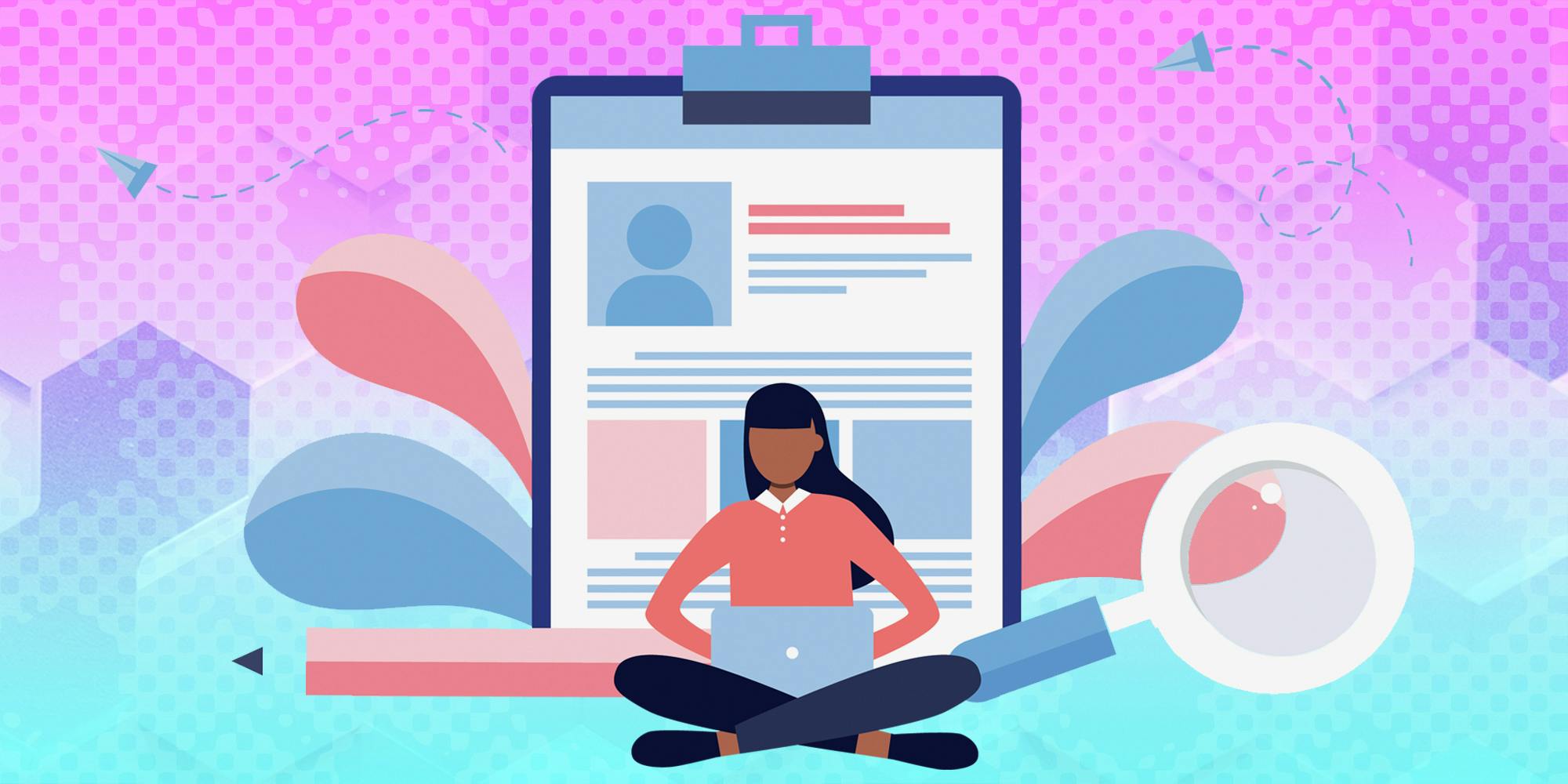The isolation of the coronavirus pandemic upended people’s lives—and made internet connection even more essential. In Access to Care, the Daily Dot asked TikTok mavericks and Reddit newbies how they give and receive healthcare and community support online, a year into the pandemic.
In these stories, therapists turn to TikTok to reach audiences at home, unemployed workers find support on Reddit, Black college students grapple with lack of community on a virtual campus, and young consumers order birth control via Instagram. The winding, and sometimes invisible, thread of Access to Care links them together.
Brianna McBride knew she was going to be great. Her parents raised her to accept no limits.
But McBride, a senior at the University of Texas at Austin graduating in May, wouldn’t be who she is today without the Black community she found in college.
“It’s definitely a place where I feel not only refuge, but people build me up to be able to do whatever and be whatever and that’s made a significant impact on my life,” McBride told the Daily Dot.
The coronavirus pandemic has made it more difficult for college students to find and sustain community, especially for Black, brown, and Indigenous students. For BIPOC students attending primarily white institutions, it can be especially isolating not connecting in-person with other students as they typically would in student organizations or in BIPOC spaces on campus.
Students are adapting their means of community building by turning to social media and attending virtual organization meetings and events. Meetings often start with ice breakers, an attempt at intimacy and connection over Zoom. But it’s not the same. Some cameras stay off, and many students feel more drained after leaving the meeting.
‘You build a community where you can feel safe’
When Houston-native McBride first stepped on campus four years ago, the first thing she sought out was the Black community. Out of more than 40,000 undergraduate students at UT Austin, only 5.3% of the student population is Black.
Community is at the core of the work McBride strives to do. She is the co-director of Black President’s Leadership Council, the recruitment chair for Texas Tour Guides and she minors in Black studies. Surrounding herself with and for the Black community was no accident.
“You build a community where you can feel safe and feel like you can progress and make mistakes without feeling like it’s the end of the world,” McBride said. “[College] is only four years, but a lot happens in those four years.”
One particular emblem of UT Austin that has alienated many students is “The Eyes of Texas” song, a longtime tradition played after football games by the Longhorn Band. The song faced protests last year by students, athletes, and faculty members for its racist, minstrel origins, but the university announced it would keep the song after releasing a 58-page report investigating its history.
Dr. Richard Reddick, the committee chair for the Eyes of Texas Committee, said failing to understand why people strongly object to the song would be a missed opportunity.
“We have to start understanding that it is possible to coexist in a space where we have very different perspectives,” Reddick said. “What I found [sitting on this committee] is that there’s a lot of places that we need to improve trust.”
Reddick said universities, the origins of many social justice movements, are opportune places to start important conversations.
“The other thing I would say is the importance of being in community with other institutions,” Reddick said. “Other schools are grappling with similar issues. We should all be talking to each other about best practices because it’s not just the University of Texas.”
UT Austin’s Black Studies Collective also hosted a three-day forum called “State of Black UT” in February to discuss and highlight action items on how to create supportive environments for the Black UT community.
Earl Potts, a computer science and African and African diaspora studies junior, spoke at the event and said “The Eyes of Texas” is an example of what furthers distrust in the university and discourages student involvement. “It hurts us,” Potts said.
Shaina Hall, President of the Black Graduate Student Association, said she wants the university to provide more financial support for professional development and scholarship opportunities for Black students.
“I envision us being able to come together and be happy on campus,” Hall said. “Be Black. Be happy.”
‘You will feel like you’re not supposed to be here’
The reality is that at a predominantly white college, students of color are largely forced to create their own community in order to survive and thrive.
“You will feel like you’re not supposed to be here because you will not see people who look like you in your class,” McBride said. “The majority of our community is fostered within student organizations. That is why we invest so much in them.”
McBride said understanding the time and energy that goes into providing students with a sense of belonging and support that extends beyond recruitment is the first step in understanding the needs and desires of Black students.
“You say you want diversity, but you don’t want to do what it takes to actually cultivate that in a way that makes us feel comfortable,” McBride said.
That feeling of community has been hard to replicate online, especially the small things. Nodding your head to somebody in passing on campus. Walking into a lounge created specifically for Black students to relax and immediately be embraced by those in the room.
“Those are the small things that we carry with us and we can’t do that right now,” McBride said.
McBride worries that the pandemic will make it harder to sustain traditions that are important in connecting and celebrating Black students on campus. For instance, the pandemic forced Black Student Weekend, the annual welcome program for incoming Black students, to go virtual.
“The biggest thing about having these events is how you feel when you’re in a room full of Black people,” McBride said. “It’s a little scary seeing what it’s going to look like in the future.”
‘It’s always good to not feel like you’re alone’
Tykino Davis, a freshman at UT Austin, started making TikToks sharing his experience as a Black student at the university. Davis knows what it’s like to feel excluded. After asking a question in his class GroupMe, a text messaging app, he was met with radio silence. Whether it was because he was Black, that moment stands out to him as a defining example of the isolating virtual college experience.
“It’s very important to share your experiences because you never know if somebody else might be going through the same thing,” Davis said. “It’s always good to not feel like you’re alone.”
One of his most popular TikToks, which has more than 100,000 views, highlights the affirmative action bake sale held by UT’s Young Conservatives of Texas chapter in 2016 in which prices of goods differed depending on the race of the customer. Davis first heard about the bake sale in his senior year of high school. After learning more about UT’s racist legacies, he decided he needed to talk about it because no one else was.
Another TikTok that Davis made is filmed from the perspective of a Black student. In the video, he walks up smiling until his eyes meet with the camera and he grimaces, walking away. The TikTok captures the Black student experience on college campuses which is often colored by a feeling of exclusion or overt racism.
The comments are filled with people from colleges all across Texas who resonate with the video, from Texas A&M University to Texas Tech University.
“I feel like I should have went to an HBCU [Historically Black College and University],” Davis said. “Sometimes I want to transfer but I have friends here.”
Attending UT Austin is the first time Davis has not been around people he could relate to. He grew up around the Black community his entire life.
“I want to meet a group of people I can have intellectual conversations with,” Davis said. “Talk about society, music, and movies.” Due to the pandemic, fewer people are on campus, and Davis has yet to know what it’s like to avoid the crowds of rushing students and brave bikers despite living on campus for his freshman year.
‘How we’re going to continue to survive’
McBride said greater institutional support, from funding student organizations and mental health resources to compensating the work it takes to sustain community building efforts for students, faculty, and staff, is the support BIPOC people need during the pandemic.
UT Austin announced a series of diversity, inclusion, and equity initiatives in July 2020: recruiting, attracting, retaining, and supporting diverse students, faculty, and staff and reflecting university values through the symbols and buildings kept on campus. The progress on initiatives can be tracked, from planned and in progress to complete.
Jason Molin, the digital communications director for UT’s Division of Diversity and Community Engagement, told the Daily Dot about existing organizations that help create community for BIPOC students. Resources include the Multicultural Engagement Center, the Heman Sweatt Center for Black Males, and the Latina/x and Indigenous Leadership Institute.
In order to make resources and information more accessible for Black students, McBride is working with other students to create a Twitter list that centralizes information from different organizations and community centers on campus. This is one step McBride sees to moving forward: the empowerment of working together to provide the resources needed to thrive.
McBride knew she was going to be great. Now she is raising others to accept no limits.
“Black people historically move collectively,” McBride said. “It’s how we’ve always been able to survive so that’s how we’re going to continue to survive.”
Read the rest of the Access to Care series here:






